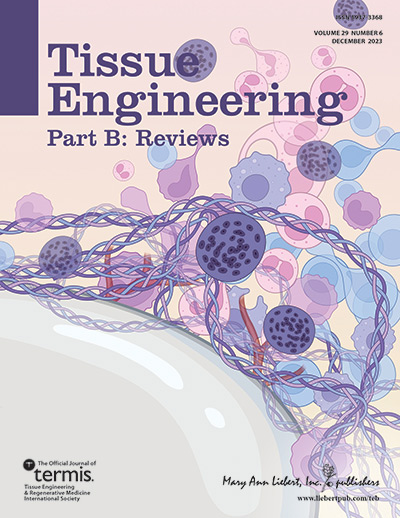Emerging diabetes therapies: Regenerating pancreatic β cells.
IF 4.6
2区 医学
Q2 CELL & TISSUE ENGINEERING
引用次数: 0
Abstract
The incidence of diabetes mellitus (DM) is steadily increasing annually, with 537 million diabetic patients as of 2021. Restoring diminished β cell mass or impaired islet function is crucial in treating DM, particularly type 1 diabetes mellitus (T1DM). However, the regenerative capacity of islet β cells, which primarily produce insulin, is severely limited, and natural regeneration is only observed in young rodents or children. Hence, there is an urgent need to develop advanced therapeutic approaches that can regenerate endogenous β cells or replace them with stem cell (SC)-derived or engineered β-like cells. Current strategies for treating insulin-dependent DM mainly include promoting the self-replication of endogenous β cells, inducing SC differentiation, reprogramming non-β cells into β-like cells, and generating pancreatic-like organoids through cell-based intervention. In this Review, we discuss the current state of the art in these approaches, describe associated challenges, propose potential solutions, and highlight ongoing efforts to optimize β cell or islet transplantation and related clinical trials. These effective cell-based therapies will generate a sustainable source of functional β cells for transplantation and lay strong foundations for future curative treatments for DM.新兴糖尿病疗法:再生胰腺β细胞。
糖尿病(DM)的发病率每年都在稳步上升,到 2021 年将有 5.37 亿糖尿病患者。恢复减少的β细胞质量或受损的胰岛功能对于治疗糖尿病,尤其是1型糖尿病(T1DM)至关重要。然而,主要产生胰岛素的胰岛β细胞的再生能力非常有限,只有在年轻的啮齿类动物或儿童身上才能观察到自然再生。因此,亟需开发先进的治疗方法,使内源性β细胞再生,或用干细胞(SC)衍生或改造的β样细胞替代内源性β细胞。目前治疗胰岛素依赖型糖尿病的策略主要包括促进内源性β细胞的自我复制、诱导SC分化、将非β细胞重编程为β样细胞,以及通过细胞干预生成胰腺样器官组织。在本综述中,我们将讨论这些方法的技术现状,描述相关的挑战,提出潜在的解决方案,并重点介绍目前为优化β细胞或胰岛移植及相关临床试验所做的努力。这些有效的细胞疗法将为移植提供可持续的功能性β细胞来源,并为未来治疗糖尿病奠定坚实的基础。
本文章由计算机程序翻译,如有差异,请以英文原文为准。
求助全文
约1分钟内获得全文
求助全文
来源期刊

Tissue Engineering. Part B, Reviews
Biochemistry, Genetics and Molecular Biology-Biochemistry
CiteScore
12.80
自引率
1.60%
发文量
150
期刊介绍:
Tissue Engineering Reviews (Part B) meets the urgent need for high-quality review articles by presenting critical literature overviews and systematic summaries of research within the field to assess the current standing and future directions within relevant areas and technologies. Part B publishes bi-monthly.
 求助内容:
求助内容: 应助结果提醒方式:
应助结果提醒方式:


